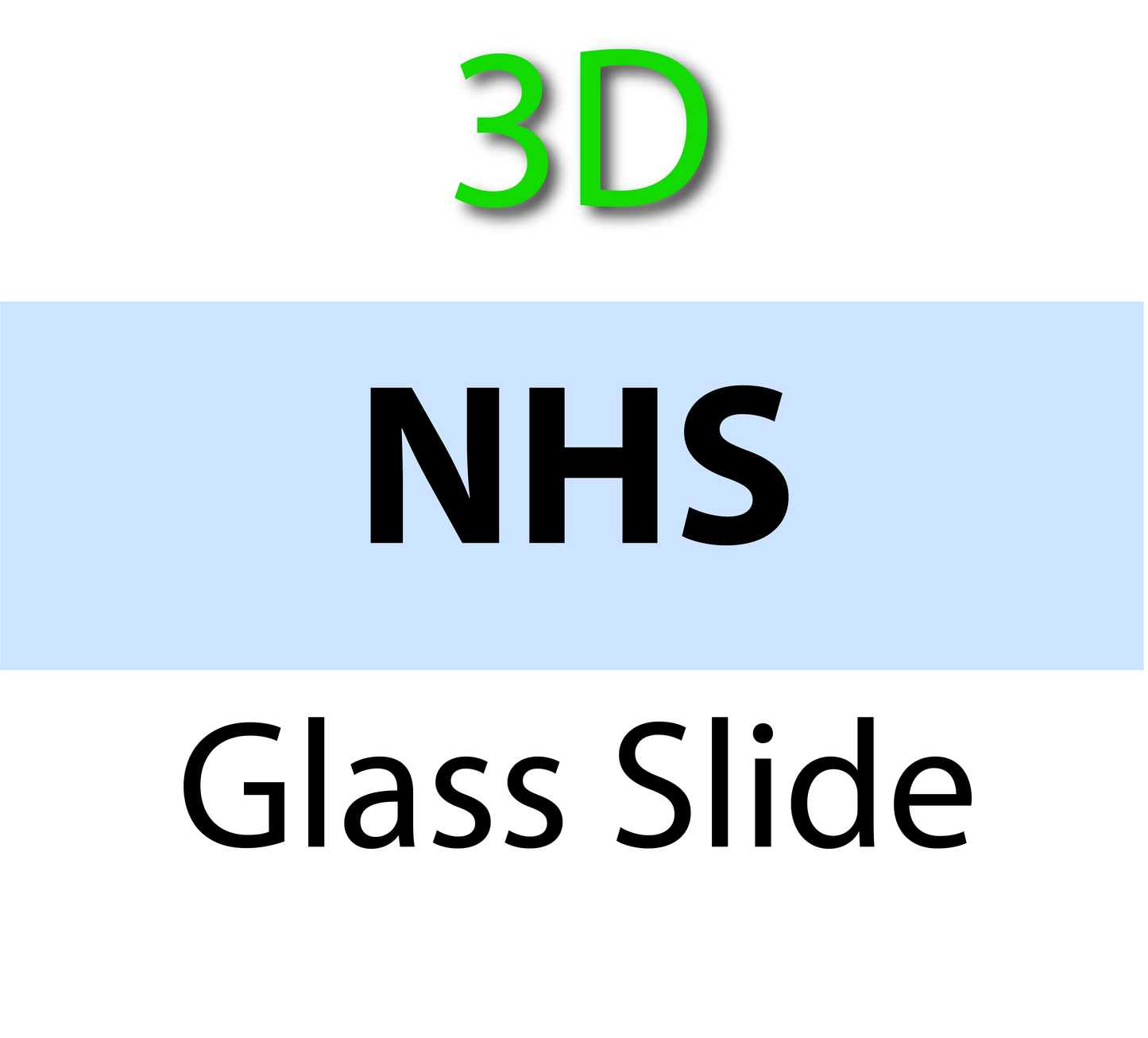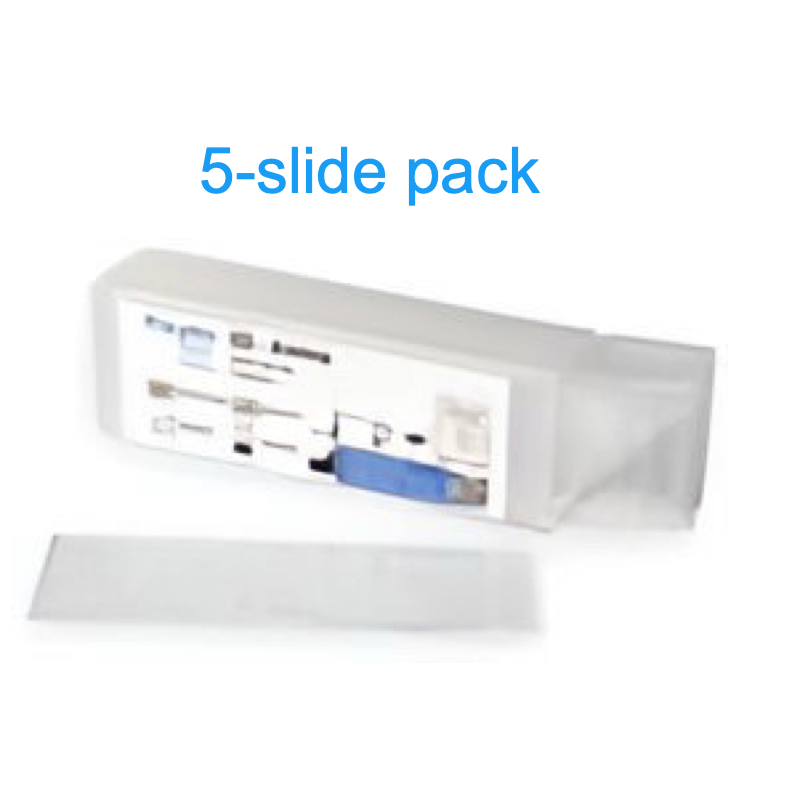PolyAn
104-00-405 PolyAn 3D-NHS Glass Slide (5 slides/box)
104-00-405 PolyAn 3D-NHS Glass Slide (5 slides/box)
Couldn't load pickup availability
3D-NHS Glass Slide
The 3D-NHS slide consists of an activated Carboxy group, N-hydroxysuccinimide, for direct binding of amine-containing (bio)molecules.
PolyAn 3D-NHS glass slides are manufactured from high-quality glass with an ultra-flat surface and low background fluorescence. The glass is coated with a thin NHS-ester layer that will covalently bind most biomolecules.
The 3D-NHS slides are easy to work with and are fully compatible with all microarray printers and slide scanners / imagers.
The NHS-ester reacts immediately with the NH2-terminus of biochemical species to form a covalent bond with the surface.
The reaction of carboxyl groups with N-Hydroxy succinimide leads to highly reactive esters, which can be easily reacted with nucleophiles e.g. amines, hydrazines. However, due to its high reactivity the NHS-ester is susceptible against hydrolysis and is characterized by a relatively short shelf-life. All NHS-activated surfaces should therefore be processed quickly.
There are a number of different approaches to couple on the 3D-NHS slide surface:
• It is assumed that not all carboxy groups have reacted to NHS-esters during activation. Thus a negatively charged carboxy surface still remains which in turn supports the physico-chemical adsorption of positively charged probes e.g. NH3. Hence a protonating media (pH < 5) for the biochemical species to get a positive charge is required.
• A nucleophilic attack on the active ester is also catalysed under basic conditions (pH > 8.5). After attachment of the biochemical species the surfaces must be blocked with a blocking buffer containing small molecules that can access all reactive groups within the 3D-Matrix.
The slides are also available as 25-packs, or in larger quantities upon request.
Share




